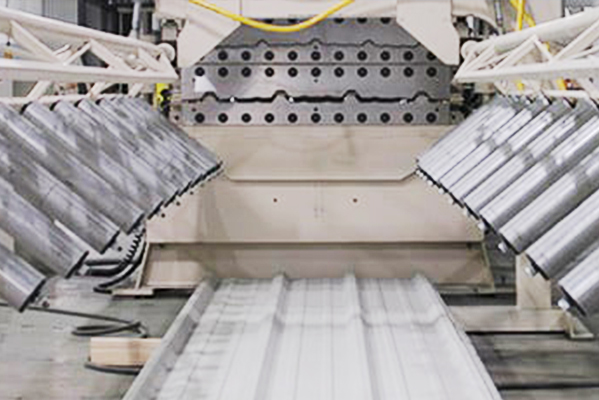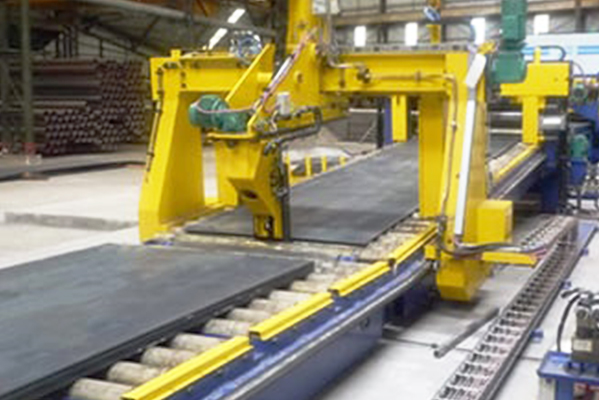Navigation Menu
Contact Us
- Email:
- info@wxavatar.com
- Address:
- Yurong Village, Yuqi Street, Huishan District, Wuxi, China.
Release Date:Apr 09, 2025 Visit:54 Source:Roll Forming Machine Factory
Palletizers are essential industrial machines used to automatically organize and stack products onto pallets for storage or shipment. The construction materials of palletizers play a critical role in their durability, performance, and suitability for different working environments. This article explores the various materials used in palletizer construction and their respective advantages.
Primary Structural Materials
1. Steel
The majority of palletizer frames and structural components are made from high-grade steel due to its exceptional strength and durability. Carbon steel and alloy steel are most common, offering:
High load-bearing capacity to support heavy products
Excellent resistance to mechanical stress
Long-term structural stability
Cost-effectiveness for industrial applications
Many manufacturers use powder-coated or galvanized steel to enhance corrosion resistance, especially in food processing or cold storage environments.

2. Stainless Steel
For industries with strict hygiene requirements (food, pharmaceuticals, chemicals), stainless steel (typically 304 or 316 grade) is preferred because:
It resists corrosion from moisture, chemicals, and cleaning agents
Has a smooth surface that prevents bacterial growth
Maintains appearance and integrity in washdown environments
Withstands extreme temperatures
Moving Components and Wear Parts
1. Aluminum
Lightweight aluminum alloys are often used for:
Robotic arm components where weight reduction improves speed and energy efficiency
Non-load-bearing structural elements
Parts requiring excellent corrosion resistance with reduced weight
2. High-Strength Plastics and Composites
Engineering plastics like UHMWPE (Ultra-High-Molecular-Weight Polyethylene), nylon, and polycarbonate are used for:
Wear strips and guides that require low friction
Components needing chemical resistance
Insulating elements in electrical components
Parts where noise reduction is important
3. Rubber and Polyurethane
Used for:
Gripping surfaces on end effectors
Vibration dampening mounts
Protective bumpers and impact absorption components
Specialized Components
1. Electrical and Control Systems
Enclosures typically made from stainless steel or coated aluminum
Circuit boards using fiberglass and copper
Wiring with copper conductors and various insulation materials
2. Hydraulic Systems (for hydraulic palletizers)
Steel or aluminum for pump housings
Brass or stainless steel for valves and fittings
High-pressure hoses with synthetic rubber and steel braiding
Surface Treatments and Coatings
To enhance performance and longevity, palletizer components often receive:
Powder coating for corrosion resistance and aesthetic appeal
Anodizing for aluminum parts
Hard chrome plating for wear resistance on moving parts
Epoxy coatings for chemical protection

Material Selection Factors
Manufacturers choose materials based on:
Load requirements - Heavy-duty applications demand high-strength steel
Environmental conditions - Humidity, temperature, and chemical exposure
Hygiene requirements - Food-grade applications need stainless steel
Operational speed - High-speed robots benefit from lightweight alloys
Maintenance considerations - Corrosion-resistant materials reduce downtime
Cost constraints - Balancing performance with budget requirements
Modern palletizers combine these materials strategically to optimize performance, durability, and cost-efficiency across various industrial applications. The continuous development of new alloys and composite materials promises even more advanced palletizer designs in the future.